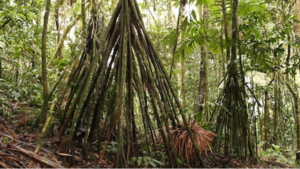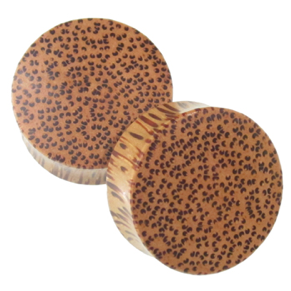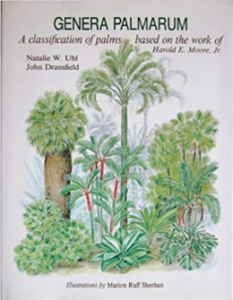Module 4: Tropical Forest Plant Growth Forms as Related to Natural Forest Management
Topic 4.5: Palms
Palms are among the most useful plants for people as well as for wildlife in tropical forests. Even those that grow to be large trees, lack a vascular cambium and the capacity for secondary growth. When a palm stem emerges above the ground after a prolonged period of establishment growth (10-50 years), it is as large in diameter as it will ever get (except for local swelling in some species). This prolonged primary growth of the terminal bud is apparent in stilt-rooted palms because it occurs above-ground (Figure 3-2: growth habits of palms, with establishment growth diagram). The absence of a vascular cambium, the scattering of vascular bundles throughout the cross section of the stem, and the location of the terminal bud under many layers of leaf bases makes palms among the most fire resistant of trees. Fire-induced conversion of forests into palm savannas is underway in many parts of the tropics.

Figure 4.5.1. A stilt rooted palm. In the center of the roots is a stem that is obconical in shape (= an cone standing on its point). In most palms the roots are close together and the obconical stem is entirely below ground.
Among the commercially most important palms are the rattans of Southeast Asia. Climbing palms occur and are harvested in other parts of the tropics, but trade in rattan products is huge in comparison. There are numerous species of commercial rattans, some are single stemmed and large (2-4 cm) in diameter, others are multiple stemmed and narrow, but all are densely spiny and climb with the aid of spine-beset modified inflorescences or leaf tips.
Although a few palms are used for their durable “wood” most commercially valuable species provide edible shoot tips (=palm cabbage), leaves for thatch, and seeds and fruit for food and oil. The horticultural trade in palms is also large, and some species are on the verge of extinction in the wild due to over-collecting. Such losses are avoidable because most palms are readily cultivated or managed as part of multiple-use forestry programs.


Figure 4.5.2. Cross sections from the stem of a palm. Note the scattered vascular bundles and lack of either a vascular cambium or bark (left). Illustration of some of the many growth forms of palms (right).
